Bill Hiatt's Blog
May 10, 2024
Substack Post for March
As you can tell from the sidebar, I’ve recently started publishing material on Substack that I might formerly have published here. While there isn’t too much point in publishing the same pieces in two different places, I want to make sure that visitors to this website have easy access to anything I publish elsewhere. Consequently, I’ll preview all the content here and provide links. As with all my posts here, my Substack posts are all available for free.
Literary Snobbery (March 2) (IDabarti CGI/Shutterstock)
(IDabarti CGI/Shutterstock)This article discusses the harms that flow from assuming that one genre is objectively better than another. Literary works should be judged on their own merits, not on their genre label. To read the post, click here.
“Green Wounds” (March 4-5)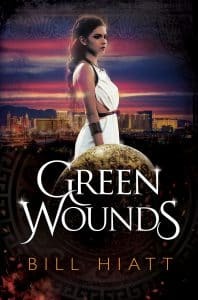 cover by Peter O’Connor
cover by Peter O’ConnorThis is the short story that inspired The Strange Case of Guaritori Diolco. Though set in modern times, the story features Medea, the ancient Greek sorceress. She isn’t satisfied with destroying the life of Jason, her traitorous husband, only once. Instead, she finds him and kills him each time he reincarnates. But all is not what it seems, as a mysterious stranger reminds her. You can read the story (split into two posts) here. Alternatively, you can download the story in ebook format here. (Signing up for my newsletter is optional.)
Finding Inspiration in Everyday Places (March 6)

This is the first in a series of posts about how to find inspiration in seemingly unlikely places–in this case, my own backyard. You can read the post here.
Avatar: The Last Airbender (March 8) Lumena/Shutterstock
Lumena/ShutterstockWhat’s my take on the recent Netflix adaptation? You can read my post here.
Book Review: To Kill a Unicorn (March 10) Sari Oneal/Shutterstock
Sari Oneal/ShutterstockAfter reading this book, John Corwin is one of my new favorite authors. To find out why, read my post here.
World-Crossed Lovers (March 15-19)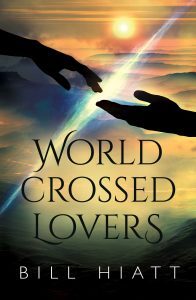 cover by Peter O’Connor
cover by Peter O’ConnorSpell Weaver fans will appreciate this story of Magnus’s visit to a parallel universe to find a second chance at love. To find out whether he achieves his dreams or not, you can read the story, serialized in five parts, here. Alternatively, you can download the story as an ebook here. (Signing up for my newsletter is optional.)
Spring, Time of New Beginnings–for Fantasy Writers (March 21)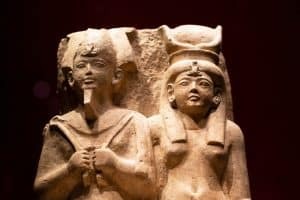 Osiris and Isis (Hemro/Shutterstock)
Osiris and Isis (Hemro/Shutterstock)This is my Spring Equinox discussion of how the myth of the dying god makes good raw material for fantasy writers. You can read the post here.
Early Morning Walk 1 (March 25)

This is yet another post about finding inspiration in ordinary things. Of course, since it’s based on a pre-dawn walk, the imaginings it generates tend to be dark…
“Rock and Roll Heaven” (March 25) Taras Verkhovynets/Shutterstock
Taras Verkhovynets/ShutterstockWhat happens when a man with delusions of being an ancient god actually meets that god? Nothing good!
You can read the story that won fourth place in the Wicked Writing Contest right here.
Hmmm… I had intended to list both March and April in one post, but it’s clear now that I will need to split it, so I’ll be back with the April listings soon.
Advice on SubstackFor those of you who are writers, yes, Substack can be a good platform. But as you’ll notice, even without counting the seven posts based on older material, I’ve been posting far faster than I ever did here. That’s partly because it’s hard to get visibility on Substack when one first joins. The key element in building an audience is publishing frequently. You need to give readers a reason to visit your Substack.
May 27, 2023
June 2023 Giveaway
June 2023 Giveaway Reset cookie consentAccept cookies if the widget is blocked or enter here.
(Note: To avoid disqualification of your entries, make every effort to avoid entering on public networks from which other entrants may also be logging in. If you must use such a network, or if you are using your home network and have more than one entrant in your household, please use one of the social media login options.)
(The featured image is copyrighted by Rawpixel and licensed from Shutterstock.)
February 26, 2023
Is Eliminating Honors Classes a Way To Achieve Equity?
Recently, my community began the process of eliminating high school honors classes. Most of this post is my letter on the subject to the board of education, lightly edited, divided by topic, and provided with illustrations. I thought about including additional research, but I think what I included initially is probably enough to get my point across.
The LetterBefore I get into the subject, I’ll offer a few words about myself since none of you know who I am, and my experience is relevant to the point I’m going to make.
Relevant Background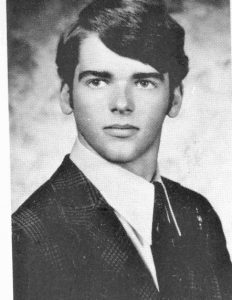 Me in 1974
Me in 1974I am a product of Culver City schools (CCHS class of 1974). The school system prepared me well for UCLA, where I was an English major and also where I earned my teaching credentials (single subject credentials in English and Social Studies). My career spanned thirty-six years in three districts. I started at John Muir Junior High in LAUSD teaching English, US History, and ASB (one semester). For the next year and a half, I worked in CCUSD (some day-to-day subbing and two long term assignments, one in US government, economics, and ASB, and one in English). I also restarted the forensics (competitive speaking) program. I would have stayed in Culver City, but it didn’t have a permanent assignment for me at that point. Beverly Hills did, and that’s where I ended up for the next thirty-four years.
After a brief stint as Director of Forensics (teaching competitive speaking and public speaking, as well as English), I moved to a full-time English position. During my time at Beverly Hills High School, I taught classes at all four grade levels and geared to a wide variety of different ability abilities. I also served in a wide variety of capacities outside the classroom, including Coordinator of Honors and AP English as well as English Department Chair.
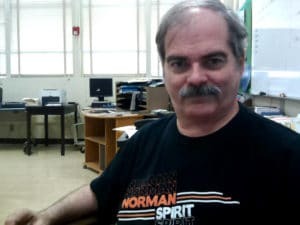 Me in my classroom prior to my retirement
Me in my classroom prior to my retirementThese roles gave me access to data far beyond my own classroom. I received an even broader exposure to the school and the district from my participation on Secondary Education Council (advising the principal), the Superintendent’s Advisory Council, and the Superintendent’s Academic Advisory Group (same kind of thing, but under two different superintendents), as well as my work with the teacher’s union, including a stint as Director-at-Large for the high school.
In other words, I have a fair amount of experience and have seen a lot of data, predominately related to high school English but with a good amount of information from other disciplines and levels as well.
As a result of my experience, I have some concerns about the elimination of honors English and the proposed elimination of other honors classes going forward.
Controversy Regarding Ability GroupingI am well aware that some people are skeptical about classes grouped by ability, and there are certainly studies that oppose the practice. On that subject, I’d recommend the article at here, a 2021 piece from the Brookings Institution that outlines some of the problems involved in that kind of analysis.
Mixed Evidence (Ground Picture/Shutterstock)
(Ground Picture/Shutterstock)Basically, the issue has been debated for over a century, hundreds of studies have been done–and the evidence on the effects of ability grouping is still unclear. Why is that? As with all educational research, it’s very hard to exclude all confounding variables (other factors that could influence the results). Every student is different. Every teacher is different. Every school community is different.
Back in 1992, Kulik and Kulik performed a meta analysis of the data on ability grouping available at that time. I’ve quoted the abstract from their analysis in full below (emphasis added).
Meta-analytic reviews have focused on five distinct instructional programs that separate students by ability: multilevel classes, cross-grade programs, within-class grouping, enriched classes for the gifted and talented, and accelerated classes. The reviews show that effects are a function of program type. Multilevel classes, which entail only minor adjustment of course content for ability groups, usually have little or no effect on student achievement. Programs that entail more substantial adjustment of curriculum to ability, such as cross-grade and within-class programs, produce clear positive effects. Programs of enrichment and acceleration, which usually involve the greatest amount of curricular adjustment, have the largest effects on student learning. These results do not support recent claims that no one benefits from grouping or that students in the lower groups are harmed academically and emotionally by grouping.
I can’t find other material I used to have from the same analysis, but I recall that Kulik and Kulik, lamenting the limitations of most studies, called for more comprehensive studies. (Larger studies might conceivably produce more conclusive data by allowing comparison of a wider variety of different schools and situations.) To the best of my knowledge, no such study has yet occurred, partially because it would be more expensive, but also because some researchers have mistakenly concluded that the subject is already settled.
Confounding Variables (Motortion Films/Shutterstock)
(Motortion Films/Shutterstock)The Brookings articles provide two interesting examples of how confounding variables can reduce the value of a study: Burris, Heubter, and Levin (2006), and Boaler and Staples (2008).
In the former case, the use of Nassau, an atypically wealthy community with an atypically low number of struggling students, raises some question about whether the reform (detracking middle school math) would lead to the same result (increasing enrollment in higher level math courses in high school, especially for students of color and disadvantaged students) in other settings. It’s easier to remediate a small number of students (6%) in a regular class environment than it would be to remediate the more typical 39% that way—particularly in a district that probably has smaller than average class sizes to begin with. (Average secondary class size in California is about 29, tied for the highest in the nation; in New York, it’s 21. Let that sink in for a minute.)
In the case of Boaler and Staples, the school that had the best results of the three studied implemented heterogeneous classes but also implemented several other reforms (everything from block scheduling to significant revisions in curriculum). How much of the improvement was caused by heterogeneous grouping? It’s impossible to tell.
Data May Be Relevant in Some Situations but Not Others 9r classen/Shutterstock)
9r classen/Shutterstock)What do we learn from these examples? That one reason for getting divergent results from educational research is not that the results are invalid per se, but that they are situational in nature. In other words, what works well in one school may not get the same result in another. That’s why it’s important to tailor programs to the specific needs of the district. I’ve seen this pattern over and over again with data derived from different schools—it produces inconsistent results because different schools are, well, different. I’ve also seen programs that worked really well in one school fail miserably in another.
Given what I’ve just said, you might be inclined to discount my other arguments because most of my background was at Beverly Hills High School. That’s a legitimate concern. But it’s important to recognize that Beverly Hills is far different from its stereotypes. Though BHHS officially is 70% white, as opposed to 24% at CCHS, at least half of that 70% is composed of groups that often don’t identify as white, Persians being the largest (over 30% of the total, though I’m not sure what the exact figure is now.) As a consequence, BHHS is the only school I know of that has what amounts to a student holiday on Nowruz (Persian New Year).
Also, BHHS has historically had a fairly large percentage of students not born in the US, though I believe this has diminished somewhat in recent years. When I left, over fifty home languages were represented at the high school. Historically, BHHS had a larger EL population than any other comparably affluent community, though the percentage of EL students has also declined in recent years. Many of these families came to the US as refugees originally, and some of them came with almost nothing and essentially had to restart their lives. This isn’t exactly the way people visualize the student population at BHHS.
Nor is the school as economically homogeneous as the stereotypes would suggest. Although the average household income is substantially higher than that of other communities in LA County, there are enough disadvantaged students to make both the high school and one of the elementary schools Title I schools, and the middle school (which didn’t exist as a separate entity at the time I left) is probably one as well.
[image error]In academic terms, the district has problems with relatively high student turnover rates. When I worked there, 20% of the incoming freshman class was typically new to district. An additional 20% was added sophomore year. Many of these students were appropriately proficient for their age levels, but a lot were not. For example, some students came in with third grade reading levels, and a significant number were reading below grade level. Similar discrepancies occurred in writing skills (and I would presume in math as well, though I’m more familiar with the patterns in English).
As you can see, though located in an affluent community, BHHS is more racially, culturally, economically, and academically diverse than you might think. The only statistic that separates it from schools with comparable diversity is per pupil spending. In 2020-2021, BHUSD was spending $22,396 per student. CCUSD was spending $12,465. (For context, in August, 2022, US News reported that the California average was $13,029, putting California about 20th in the nation.
It would be legitimate to question whether my experience in BHHS is relevant, based on the financial discrepancies involved. However, if CCUSD is choosing between an ability-based classes model or a differentiated instruction model, I’d argue that the latter is actually more expensive to sustain effectively. I’ll say more about that a little later. It’s also worth noting that the discrepancy wasn’t as big when I worked at BHHS. The gap widened significantly following BHUSD’s shift from ADA funding to one based on local property tax revenues (whose exact name I forget). Since that change occurred concurrently with a fairly rapid drop in enrollment, BHUSD and CCUSD were significantly closer together in per-pupil spending when I was working at BHHS.
In any case, my experiences at BHHS would lead me to question the ability-grouping-is-always-bad theory.
Students of Color Aren’t Necessarily Underrepresented in Honors Classes (Drazen Zigic/Shutterstock)
(Drazen Zigic/Shutterstock)One of the criticisms often made of ability grouping is that students of color are underrepresented in advanced classes. Even looking at students of color as traditionally defined (not counting Persians and other groups classified as white but not identified as white) students of color were neither over-represented in lower-level classes nor underrepresented in advanced classes. Instead, such advanced classes were reflective of the makeup of the student population as a whole. I don’t have accurate statistics on the representation of disadvantaged students, though I am aware that some of the students in my AP classes were involved in the free lunch program.
Ability Grouping Need Not Lock Students into a Track (Elnur/Shutterstock)
(Elnur/Shutterstock)Another criticism is that grouping by ability locks students into a track from which they cannot escape. Again, my experience says otherwise. For example, BHHS’s English honors program doubled in size between freshman and sophomore years. Clearly, students in regular English were not locked in but able to move to a higher level. Similarly, 87% of the students who entered BHHS reading two or more levels below grade level and were placed in an English designed specifically to develop reading skills were able to move to regular English by senior year. (Considering how slowly reading improvement is typically achieved at that age level, even under ideal conditions, those results are saying something.) In the same way, EL students in ELD classes raised their skills faster than those not in the program, with many qualifying for honors or AP soon after their exit from ELD.
Some of the available studies are equally positive about ability grouping. For instance, Card and Guiliano (2015) found, according to the Brookings article, (emphasis mine) “large, positive effects for the high achievers in the tracked classes, particularly students of color or students from disadvantaged households, and no negative spillover effects for students in other classes.” The last statement is particularly telling. If the existence of advanced classes doesn’t negatively impact the students in other classes, then what reason could there possibly be to deny advanced courses to students who can benefit from them?
Culver City’s Motivation for Eliminating Honors ClassesThat brings us to a consideration of what motivated the elimination of honors classes at CCHS. For purposes of discussion, I’ll assume that the unnamed district office who spoke to Fox News Digital and was afterwards quoted in the New York Post is accurate. (Again, the emphasis is mine.)
“This is an issue of both academic rigor and equity. The transition from a two-tier system of ‘Honors and Non-Honors’ to ‘College Prep’ classes-for-all was led by our English teachers. We put our trust in our educators who are closest to our students, the teachers who are with them in the classroom day in and day out.
We want to emphasize that the College Prep curriculum is an Honors curriculum, serving all students with the same level of rigor as the Honors curriculum, and one that prepares students to enroll in advanced classes in their final years of high school. Our teachers expect the same high-level outcomes for all students. CCUSD fully supports this well-researched pedagogical approach. We are fully committed to giving the teachers the resources needed to support all students at all levels.”
Critique of the Stated Rationale (Bangun Stock Productions/Shutterstock)
(Bangun Stock Productions/Shutterstock)All of that sounds wonderful. But having been in education so long, I’ve learned that a lot of things sound wonderful on paper but don’t necessarily work well in reality. And the statement raises a number of questions it doesn’t answer. Frankly, parts of it sound more like the statement of a politician than that of an educator.
First, it would be nice to know what the decision-making process was. What I’m about to say is not intended to be disrespectful to either board members or administrators in this district, none of whom I know. But in the past, I have noticed a tendency for administrators to present their handiwork as teacher initiated. I’ve served on committees in which administrators basically told us what we were going to recommend. I’ve seen attempts to suppress recommendations from teachers, as well as local studies that didn’t fit the administrative narrative. I’ve heard teachers misquoted, and I’ve even heard supposed quotes from teachers about which no teachers had been consulted. (Yes, I’m a little cynical in this area, but it’s earned cynicism.)
Consequently, I’d feel more confident about that statement if more detail were available about the way in which the teacher recommendation was developed and then subsequently expanded. (Surely, the decision to move forward with the removal of other honors classes wasn’t based solely on English teacher recommendations.)
Second, I’ve already mentioned the situational nature of education research. I understand that many people have asked about local data regarding how the new class is performing. Such data, particularly with a comparison to student performance data from earlier years, is crucial in determining the impact of the change.
Third, the statement about College Prep English being Honors English is confusing. If this is the case, why wasn’t the combined class called Honors English? And if the class is honors level, why are so many parents complaining that it is too easy for their sons and daughters? Based on these responses, I’d have to conclude that the current courses are not as rigorous as the former honors courses.
Also, wasn’t the regular English program prior to the change already college prep? (When I was a student in CCHS, virtually every regular class was college prep.) Although I know that some career paths don’t require college, I would certainly advocate doing our best to prepare all students for college, just in case. So having universal college prep coursework isn’t a bad thing, by any means. But why that would preclude a higher level honors course is beyond me.
Alternative Ways To Address the Issue (pathdoc/Shutterstock)
(pathdoc/Shutterstock)It appears the change was motivated by under-representation of students of color in the former honors classes. But I’ve also heard that CCHS has open access to honors and AP classes. If both of those statements are, wouldn’t a more sensible course of action have been to find ways to encourage more students of color to enroll in honors classes than to deny everyone the benefit of such classes?
At BHHS, when counselors were giving a reading test to incoming students and then encouraging those who scored well to consider honors English, we had many incoming students decide to try the program. When time constraints prevented counselors from having those kinds of interactions, the numbers dropped substantially. (Interestingly, Card and Guiliano found that increased screening located a lot of unidentified gifted students of color, who were then placed successfully in advanced classes. A little data and personal interaction go a long way.)
Whether or not you have open access, more academic support might help students feel ready for honors and AP. I suggest this knowing that budgetary realities might not allow for it at this time. But it is something that could definitely make a difference. And frankly, taking away an honors tier is not going to make it more likely that students of color will enroll in an AP class, if, as I understand, you’re still keeping those. The transition just gets harder that way, at least based on my experience. Students entering an AP class from a related honors class tend to do better than those who don’t. And academic readiness for AP makes it much more likely that AP will result in positive effects for students. On that last point, I recommend close examination of the book, AP: A Critical Analysis of the Advanced Placement Program, edited by Sadler, Sonnert, Tai, and Klopfenstein. One of the critical findings in that analysis is that AP students perform better in college only if they are adequately prepared for the course. Those entering with weak skills, particularly if they don’t pass the AP exam, perform no differently in college than those who didn’t take AP at all, at least according to the studies cited in the book.
Differentiated Instruction Is Not the Answer (Rawpixel.com/Shutterstock)
(Rawpixel.com/Shutterstock)That brings us back to the question of ability grouping vs. heterogeneous grouping supported by differentiated instruction. Honors classes are obviously part of the former and the system CCHS seems to be moving toward part of the latter. We’ve already talked a little about expense, but here’s the key takeaway I’ve gotten over the years from some of the literature on differentiated instruction, from my own classroom experience, and from talking to colleagues: differentiated instruction is resource-intensive. In particular, many of its advocates recommend small class sizes. Twenty is a number frequently given as a maximum, though I’ve seen estimates as high as twenty-five. In a lot of states, that’s doable, But in California, with its abysmal class sizes, it’s probably not.
We probably all agree that small classes are good to have in general, but why are they important in this context? Because differentiation in a heterogeneous class with a wide enough range of abilities requires a lot more teacher preparation. Though some publishers have moved in the direction of provided differentiated teacher materials, the ones I’ve seen still require some adaptation to specific circumstances, and they may not be available in all subjects. Preparation of one set of materials is less labor-intensive than preparation of four sets, or in some cases even more. With much more of the learning being done in small groups, differentiated instruction also presents more classroom management challenges and potentially reduces direct face time with the teacher.
In simple ways, teachers have been differentiating for many years before the term was first used. Things like giving choices on assignments to appeal to particular student interests or abilities, and finding different ways to explain concepts to different students, has been around for a long time. But when the differences become wide enough to essentially require the teacher to teach four separate classes meeting concurrently, that becomes a different level of challenge, one that is more adversely affected by class size than other instructional patterns.
From what I’ve seen, differentiation is a valuable tool, but it’s easy to do differentiation badly. For example, some years ago, I attended an inservice training on differentiated instruction being conducted by an ed services assistant superintendent from another district. Her presentation was so shocking that the school board, which had planned a series of trainings with her, cancelled all the subsequent ones.
What was the problem? Differentiation is supposed to be about finding different ways to help students get to their learning goals. But differentiation as the presenter was teaching it was more like “dumbferentiation” (selective dumbing down). For instance, she gave an example how how to structure group projects. The more advanced students were analyzing the symbolism in a short story while the less advanced ones were looking up unfamiliar words in the dictionary. While both activities have value, the first is far more intellectually stimulating, while the second is much less so and doesn’t logically lead to the first. How someone who starts with the looking-up-words group makes it to the analyzing-literature group she couldn’t really explain.
The question of what to do with a really struggling student (for example, one who didn’t know English at all) was raised, and her response was, “Well, you may just have to spend all your time with that student.” Yes, that is exactly what she said. So that one student is the only one who gets face time with the teacher. That would certainly make for some interesting conversations with parents, wouldn’t it?
I’m not suggesting that differentiation, even in severe circumstances, can’t be done better than that. Obviously, it can. But it takes class sizes small enough for all students to have face time with the teacher, as well as a support system for outliers like the non-English speaker in the example.
To be fair, homogeneous grouping can also be done very badly, but for most students, it doesn’t require class sizes as small as those required by true differentiation to function effectively. (Classes for struggling students, if a school has such classes, should definitely be smaller than the norm, but that’s not going to be most classes.)
The Question of Stigma What about the social implications? It’s often said that students not in the highest level classes are stigmatized by others and, even if not, have problems with self-image. While that can happen, what we sometimes miss is the fact that, at least at the high school level, the same thing happens in classes requiring extreme differentiation. Those kind of modifications can’t be performed invisibly. Students will quickly pick up on who is in the analyzing-symbolism group and who is in the lookup-words group, and they’ll understand the implications pretty quickly. Additionally, ability groups can develop resentment of each other, with more advanced students feeling held back and less advanced students feeling looked down upon by the more advanced ones.
What about the social implications? It’s often said that students not in the highest level classes are stigmatized by others and, even if not, have problems with self-image. While that can happen, what we sometimes miss is the fact that, at least at the high school level, the same thing happens in classes requiring extreme differentiation. Those kind of modifications can’t be performed invisibly. Students will quickly pick up on who is in the analyzing-symbolism group and who is in the lookup-words group, and they’ll understand the implications pretty quickly. Additionally, ability groups can develop resentment of each other, with more advanced students feeling held back and less advanced students feeling looked down upon by the more advanced ones.
There are also certain problems associated with advanced students that can only be solved easily in classes designed for them. As one of my former colleagues once said, “Honors and AP classes are places it’s cool to be smart.” We sometimes forget that intellectually advanced students aren’t necessarily at the top of the high school social hierarchy and may even be bullied. (I can attest to that, though much more at the middle school level than in high school.) In rare cases, such situations can lead to social alienation and even suicide. (I lost one of my best friends from middle school that way, though it was a few years after the fact.) Anyway, that’s one problem I’ve never seen a differentiated answer to, though it would be lessened in a very small class because a teacher would be more able to keep track of even subtle dynamics that might lean in that direction.
At the very least, the decision to eliminate honors English needs to be revisited. Is it really the best move under the existing circumstances? There seems to be a good chance that it’s not.
 (Rawpixel.com/Shutterstock)
(Rawpixel.com/Shutterstock)(The featured image was copyrighted by Monkey Business Images and licensed from Shutterstock.)
February 11, 2023
Better Than Us: Dystopia with a Twist
(Caution–spoilers ahead!)
Superficially, Better Than Us, the science fiction series currently on Netflix, is a typical robots-could-take-over-the-world story. A lot of people have already been pushed out of jobs by bots, and the government is floating a plan to lower the retirement age to 45, with bots taking up the slack. Of course, once that happens, bots would be positioned to take over the labor market almost entirely.
But the series is far more nuanced than its title might lead one to believe. In that respect, it’s comparable to the British series, Humans, in which the androids are portrayed sympathetically. But whereas Humans raises the issue of how we define humanity, as well as prejudice being rooted in fear of the unknown, Better than Us takes a somewhat different approach.
In Humans, at least some of the androids have achieved sentience, but they don’t want to take over the world. Rather, they want to take their place in human society instead of being treated like slave labor.
In Better Than Us, sentient AI may still be a way off. Arisa, the most advanced bot up to that point, still seems to be a creation of programming, albeit very sophisticated programming. Only at the end of season 2 (presented as part of season 1 on Netflix) does she act in a way that seems inconsistent with her more recent programming, though still true to her original directive to protect her “family” at all costs.
Both shows have in common the idea that devices driven by sophisticated AI could cost humans their jobs. But in Humans, this view seems commonplace and is used as a justification for prejudice and even violence. In Better Than Us, the general public attitude seems positive, even downright consumerist. The Liquidators, the group that wants to get rid of the bots, are portrayed as young, scruffy, and overly violent. Thought most viewers would probably see them as misguided rather than evil, very few are likely to see them as being right.
Arguably, the most evil person is Viktor Toropov, but rather than trying to destroy humanity’s future with bots, his agenda is much more simple than that–swindle his own company and the government so that he can walk away with a huge payoff for a bot prototype (Arisa) that he doesn’t actually know how to duplicate.
In other words, the biggest threat in Better Than Us isn’t the bots–it’s human greed. The bots may pose more a threat in the future, though the way in which Arisa evolves suggests that such a threat isn’t inevitable.
Is Better Than Us worth watching? Definitely! It’s a refreshing take on an old theme. Acting and production values are both excellent. There aren’t a huge number of special effects required, but the bots are handled in a way that makes them believable.
Aspiring writers can learn a lot from this one. The biggest lesson, as you might guess, is that if you use an old theme, it’s much better to have an original take on it. The series is also a good illustration of the old advice that characters should be neither too good nor too evil. Even Toropov has redeeming moments, and Safronov, the main hero, has some anger-management issues, to say the least. All of the characters seem realistic in that way.
(Featured image is copyrighted by Phonlamai Photo and licensed from Shutterstock.)
January 27, 2023
The Academy: New Approaches in Fantasy Literature
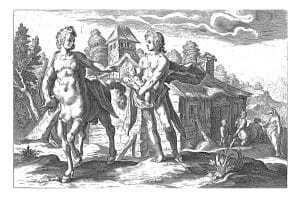 Apollo gives Asclepius to Chiron (Mophart Creation/Shutterstock)
Apollo gives Asclepius to Chiron (Mophart Creation/Shutterstock)The idea of a school for magic is far from being a new thing in literature. We all immediately think of JK Rowling’s Harry Potter books, which are certainly the most well-known modern examples. Some of us will remember Ursula LeGuin’s Wizard of Earthsea as well. But the idea goes back much earlier.
Chiron the centaur in Greek mythology trained young warriors, not wizards, but his story contains many magical elements. Aside from the fact that he’s a centaur (and a son of Cronus and Philyra, making him Zeus’s half-brother), he’s also a master of the healing arts. In very ancient times, these would have been more magical than medical. One of his students, Asclepius, son of Apollo, learned healing from Chiron and eventually became a god in his own right. Other students included Jason (of golden fleece fame), Aristaeus (another son of Apollo who eventually became a god), and Achilles. Chiron’s “school” is not completely analogous to later magic schools, but it does have some resemblances.
 (Vladimir Mulder/Shutterstock)
(Vladimir Mulder/Shutterstock)Other ancient and medieval sources involve magic training, but usually between a mentor and a single student (such as Blaise or Bleys and Merlin), Morgan le Fay bizarrely learns magic in a nunnery, at least according to one source. But at some point, perhaps in the late Middle Ages, the idea of a magic school began to solidify. We see this in a Romanian tradition, later spread to Germany, about a school run underground by Satan himself. (The German name is Scholomance, which becomes important later.) Icelandic folklore also includes tales about a Black School (Svartiskóli) which seems also to be run by Satan, who keeps the student who is slowest to leave for himself.
 (Zastolskiy Victor/Shutterstock)
(Zastolskiy Victor/Shutterstock)The first modern literary magic school is Domdaniel, found in the continued story of the Arabian Nights by Dom Chavez and Cazotte, which was published in 1793. Domdaniel appears in passing in several literary works published over the next century. In the Twentieth Century, the use of magic schools increased rapidly, though most of them don’t seem to be directly inspired by their literary predecessors.
Particularly after the boom following the release of the Harry Potter novels, you might expect the growing number of school-of-magic books to become somewhat repetitive. But in fact, many authors have developed original twists on this old theme. With a little imagination, on can breathe new life into even the most ancient of premises.
Demigods Academy Series (Pavlo Burdyak/Shutterstock)
(Pavlo Burdyak/Shutterstock)Like Rick Riordan’s Percy Jackson books, the Demigods Academy series by Elisa S. Amore and Kiera Legend has roots in Greek mythology. But while Riordan has a male protagonist and aims initially at a middle grade audience, Amore and Legend make more use of female protagonists and clearly focus on a YA audience.
Both series involve students descended from the Greek gods, who rule the universe in both. But the schools involved are very different. Camp Half Breed in the Percy Jackson universe is a teaching facility, but it’s also a sanctuary that keeps the children of the gods from being devoured by the monsters who constantly seek to destroy them. In addition, it’s existence (as well as that of its half-divine students) is a closely guarded secret.
In contrast, though Demigods Academy is a secret, its students are not. The half-divine serve in the Gods’ Army, sometimes descending like super heroes to rescue mortals from supernatural menaces. These rapid interventions are facilitated by the fact that, at a certain point, the students develop wings.
Members of the academy are recruited by means of shadow boxes, which are given by the gods to all people on their eighteenth birthday. Most people get birthday wishes or a small gift, but the favored few, who happen to be descendants of gods, are given their invitation to Demigod Academy. Once there, they do some basic training and are then claimed by one of the gods (usually the one to whom they are related).
The situation becomes rough if a student is descended from an unusual god. But everyone’s situation is complicated by the fact that the gods are sometimes evil and have hidden agendas. In such cases, the students become pawns in the gods’ cosmic struggles. As you can imagine, there is fertile ground for conflict in such an environment.
Though the inspiration here is obviously Greek mythology, the gods are modernized somewhat, much as they are in the Percy Jackson books. For example, Dionysus sometimes performs as a DJ, and aside from drinking wine, he also enjoys smoking marijuana with Demeter. That said, the books don’t seem to encourage substance abuse. The gods who partake too much end up looking less effective when they try to solve problems.
And yes, there is also a little non-graphic sex between consenting adults. Neither that nor the presence of marijuana would discourage from recommending the books to their target audience. Certainly, there are a lot of positive messages, dealing with everything from courage to friendship.
Scholomance Series (Christian Buckamneer/Shutterstock)
(Christian Buckamneer/Shutterstock)Yes, I think it’s safe to say that Naomi Novik may have drawn a little inspiration from Romanian folklore here, though her Scholomance in her novel is not run by the Devil. But students do have to rush to get out the door at graduation, for reasons I’ll mention in just a moment. And like an Icelandic counterpart of the Romanian Scholomance, The Black School (Svartiskóli), there are no teachers. Books and explanatory notes appear when students need them.
Despite these few similarities, Novik makes the material very much her own. Though there is no Devil involved, the magic users in this series are definitely subject to temptation. Magic is based on mana, which exists in all living things. Casters who are “strict mana” build their own. But it’s possible also to use malia–mana drawn without consent from the life force of other living creatures. Performing such an act causes damage to the perpetrator’s anima (the part of the caster that generates mana), so that eventually, someone who was evil enough would have no choice but to steal mana rather than generate it.
Even worse, we find out later in the series that using malia creates mals (maleficaria), creatures who feed on the mana of wizards, killing them in the process.
The Scholomance is a school, but, like Camp Halfblood, it’s also intended as a sanctuary. Young wizards, if not extremely well-protected, are eaten by mals. The Scholomance was supposed to shelter young wizards. Unfortunately, mals gradually worked their way in, making a school a kind of death trap (though still safer than the outside world). Students who want to survive learn quickly never to go anyplace alone, never to sit directly under an air vent, and other handy survival tips.
The graduation hall, through which every student has to leave, is especially highly infected. Students make alliances to survive, but even so, most of them don’t make it out.
This pattern has repeated itself for years, until El Higgins develops the seemingly impractical idea of getting all the students to ally with each other with the goal of saving everyone.
If ever there was series that illustrates the value of teamwork, this is it. It also has some the best twists I’ve seen in a long time. People who are good turn out to be evil or vice versa quite often. Clues that lead in one direction at first often end readers up at a different place entirely. And the foundations on which the wizard world is built are not as solid as they appear.
Like Demigods Academy books, the Scholomance series has a little non-graphic sex but nothing that would prevent me from recommending it to high school students.
Zodiac Academy Series (zhulbee/Shutterstock)
(zhulbee/Shutterstock)In contrast, this series, written by Caroline Peckham and Suzanne Valenti, I couldn’t recommend to high school students, though I would strongly encourage post-high school readers to give it a try.
It’s self-proclaimed bully romance (literature in which the heroine is in love with a bully), a genre fraught with potential issues for readers. However, after reading the product description for the first book, I decided to give it a try and was pleasantly surprised for reasons I’ll explain below.
The story takes place in a parallel universe, which is somewhat like Earth but much more magical. In fact, there are several magic schools, but the most prestigious is Zodiac Academy in the kingdom of Solaria, where the early books in the series are set.
Solaria’s population looks human, but is actually fae. Each fae is proficient in at least one magical element (fire, air, water, earth) and may be proficient in more. In addition, each fae is a member of an order, which gives him or her an alternate form and some additional powers. Orders include pretty much any magical or mythological creature you can think of–dragons, griffins, minotaurs, pegasuses, vampires, werewolves, sirens, harpies, and many others. The order also dictates how a particular fae recharged magically. For instance, dragons do so by touching their treasure, gold in particular. Vampires do so by drinking blood.
Fae society has certain laws protecting the weak, but many aspects of society are based on strength. For instance, vampires may use anyone as a blood and magic source if they can force that person. In other words, some behaviors we would considering bullying or abuse are the accepted way society runs.
Into this fraught situation come Tory and Darcy, the twin heroines who turn out to be Roxyana and Gwendalina Vega, daughters of the last king. Their parents had sent them to Earth to save them from being murdered, and they’ve been rediscovered just in time to attend Zodiac Academy.
Since might makes right on Solaria, they don’t automatically succeed to the throne, but they will be allowed to fight for it after graduation. Meanwhile, they have to deal with the eldest sons of the Celestial Council, who are known collectively as the Heirs.
The Heirs are the worst bullies in the early part of the series. Seeing Tory and Darcy as the biggest possible threat to their own position, Darius, Caleb, Seth, and Max do everything in their power to make the returned Vega princesses miserable.
Fortunately, the series goes far beyond that. As it fleshes out the Heirs, we discover that they are more products of their culture than evil. Some of them have also suffered abuse and been victims as well as victimizers. While that doesn’t excuse their bullying, it makes it more possible to forgive them as their relationship with the girls changes.
Yes, as the Heirs and the princesses get to know and understand each other better, and as common enemies develop, their relationships become more and more friendly, revealing in the process some of the Heirs’ redeeming qualities.
But what makes this series stand out from other bully romances for me is the fact that Tory and Roxy aren’t hopelessly in love with their tormentors in some masochistic and unhealthy relationship. Indeed, in the beginning, they aren’t in love with them at all. Far from being willing victims, they are strong, intelligent, independent woman who give as good as they get–and it turns out, payback really is a bitch.
I think any person who has read the books would realize that, despite a potentially cringeworthy premise, the books are really about overcoming obstacles, courage, personal growth, friendship, and love, among other things.
Despite the serious and sometimes dark nature of the books, the authors also manage to infuse considerable amounts of surprising humor. For instance, werewolves, fierce as they are, also behave like dogs. The first time Seth gave a frustrated shout demanding snuggles, I fell over laughing. Another particularly funny order is the pegasus (really a pegasus/unicorn hybrid, since it has a horn). Even in their human form, pegasuses tend to shed glitter and stamp their feet in a very equine way.
Then why wouldn’t I recommend the books to high school students? In contrast to the infrequent and non-explicit sex in the other two books, this series is overflowing with graphic sex. It’s the rare chapter that doesn’t have at least one encounter that would get an NC-17 rating if the books were movies. Even in the nonsexual scenes, there is frequent nudity, caused largely by the fact that most of the orders have to strip in order to shapeshift into their order form. While none of that bothers me, it’s not something I would put on a high school reading list. Nor would I recommend it for someone more comfortable with clean, sweet romance or similar genres. But for post-high school readers who are comfortable with the subject matter, it’s a great read.
(feature imaged copyrighted by Ingrid Pakats and licensed from Shutterstock for editorial use)
For more information, check the previews below.(Each of the previews below utilizes Amazon affiliate links, meaning that I earn a small commission if you buy from them.)
December 24, 2022
Mr. Midnight
One of the aspects of Netflix that I like is the availability of a wide variety of international programming. Particularly in genres like fantasy, the differences in the underlying mythology in which the fantasy is rooted lead to some interesting takes on familiar themes.
The idea of teenagers fighting supernatural creatures with the help of one or more adult wisdom figures is hardly a new premise, but its execution in Mr. Midnight is fresh. This is partly the result of the that it draws on the traditions of Singapore, which may not be familiar to a lot of Western audience members.
(At least, I think its Singaporean. Netflix and IMDB both connect it with Singapore, but for some reason, when I first watched it, I thought it was set in Indonesia. Interestingly, so did some of the IMDB reviewers, one of whom claims familiarity with Singapore. And though Tanah Merah, where the story is located, is a region in Singapore, there is also a city in Malaysia by the same name. In any case, there are a number of different cultural groups in or near the area, so some of the myths and urban legends involved have diverse origins.)
Before we discuss the series, a little background is in order. Mr. Midnight is based on a series of children’s books written by James Lee. The series parts company with the books to some extent, in that it is intended for young adults, while the books are aimed at middle graders. The series has 102 books, making it one of the longest series of children’s books in existence. It is said that it outsells the Harry Potter books in Singapore and Malaysia and is often also compared to Goosebumps. It and can be found at https://amzn.to/3C1XBh0 (affiliate link) if anyone is interested. The author has traveled widely but currently lives in Australia (which, interestingly enough, also has a town called Tanah Merah).
Tyar, the main character, begins to develop mystical abilities that are, as in many familiar stories, double edged–they can be used for good or for evil. There’s also room to make mistakes when one is inexperienced. So it’s not surprising that Tyar’s mother actively discourages his interest in the supernatural.
But it’s hard to ignore supernatural beings when they keep attacking, and Tyar’s abilities may be the only thing that can save him and his friends. This sets up a classic dilemma–use the power, and risk corruption; or don’t use it, and risk annihilation.
Tyar’s character is presented as a likeable but fallible protagonist who wants to be good but might just be corruptible under the right circumstances. His friends have their own inner dilemmas to wrestle with, as do the adults in the story. There’s more than enough conflict to keep the series running at a fast pace, as well as the overarching theme of the potential danger of power.
The monsters Tyar and his friends encounter are similar in some ways to Western supernatural menaces, but there is enough cross-cultural difference to keep the Western audience curious.
But what I really like about this kind of international series is that it also shows us how alike we are. In the modern world, we shouldn’t have to be reminded that people are people, but sometimes we do need that. The teenagers in the show react to situations in the same way that teenagers in any society would. The same is true of the adults and of the way society in general functions. This series and others like it serve as a reminder of our common humanity.
December 17, 2022
Inspiration, Part 3: Personal Life
 (jamesteohart/Shutterstock)
(jamesteohart/Shutterstock)In the first part of this series, I’ve already noted a couple of factors (reading habits and career) that influenced my writing. But readers have sometimes asked me if other events in my life have influenced my writing.
Surprisingly, that’s not an easy question to answer. If you read any of F. Scott Fitzgerald’s novels and know anything about his life, it’s easy to see a version of himself and of his wife, Zelda in the male and female protagonists. You wouldn’t have the same luck reading my novels, though. There’s no obvious life pattern that keeps repeating.
Of course, in a fantasy novel, even an urban fantasy one, any autobiographical detail from the author is likely to be more disguised than it would be in literary fiction. After all, the presence of magic, supernatural creatures, different planes of existence, and other features that don’t exist in real life tends to transform any autobiographical elements that might be present.
On the other hand, I’m a strong believer in the notion that all authors are influenced by their background, though not all in the same way. An author doesn’t have to be as consciously autobi0graphical as Fitzgerald in order to be influenced by environmental factors.
With that in mind, I’m taking a look at my writing to see if there are subtle elements that could have been influenced by my life experience.
Main CharactersI mentioned in a previous post that my earliest writing was character-driven–creating an interesting main character first and then developing the plot from the problems that main character would have. That being the case, you’d expect that some hints of my life would show up in the main character if they showed up anywhere.
Taliesin Weaver (Spell Weaver) same model as Taliesin Weaver on the original “Living with Your Past Selves” cover and advertising (Pavel L Photo and Video/Shutterstock)
same model as Taliesin Weaver on the original “Living with Your Past Selves” cover and advertising (Pavel L Photo and Video/Shutterstock)One runs into the immediate problem that Taliesin Weaver, my first main character, is superficially nothing like me. He’s athletic. In fact, he’s a soccer star in the first book, when he still has time for that sort of thing. I, on the other hand, am the most unathletic person on the whole planet. Tal is musically talented and has his own band in the first book. I can’t carry a tune and never learned to play any musical instrument. The activities I was good at in high school (speech and debate, student government) Tal doesn’t participate in at all.
Later in life, Tal’s resemblances to me don’t increase, but you really wouldn’t expect them to. He takes a nominal position in one of Carrie Winn’s businesses that leaves him free to fight supernatural menaces. Conceivably, he could have followed any career path he wanted using the doubles mention in The Serpent Waits to fill in when he can’t be around. But it was hard for me to visualize him as an English teacher.
All of that said, Tal and I do have a few resemblances. We were both good students in high school. We both drive a dark gray Prius. We both had close relationships with our parents. I sometimes did feel isolated as Tal does in the beginning of Living with Your Past Selves–but that’s pretty much any teenager ever. In fact, none of these details indicate a particularly close relationship between Tal and me.
In an earlier incarnation of this blog, I wrote that Tal, though he doesn’t reflect what I was like at his age, may reflect what I wanted to be. After all, what guy doesn’t want to be athletic? And musicians tend to get girls, or so the stereotypes claim, anyway. It’s not that I had an unhappy high school experience. On the contrary, I loved high school. And it wouldn’t have been smart for me to try to force myself into activities for which I really didn’t have any aptitude. But we all fantasize about having it all.
Max Murphy (Different Dragons) and Chris Murphy (Soul Salvager) (Yulai Studio/Shutterstock)
(Yulai Studio/Shutterstock)With these two, we can see more resemblance to me, at least to the extent that both started out as nerds.
Max Murphy was, like me, the valedictorian of his high school. Chris was also a very good student, though not quite the top. Neither one of them is at all athletic, though Max does have a relatively unnerdy aptitude for auto mechanics.
It’s worth nothing that Stan, one of Tal’s best friends, started out as a nerd, though in the course of Living with Your Past Selves, he becomes quite athletic. Afterward, I worried that I might be sending the wrong message with Stan. I didn’t want to suggest that nerds somehow became more worthwhile if they become athletes. Max and Chris were consciously crafted to avoid creating that impression, which is why, though both of them successfully survive major threats to their lives, they don’t need to increase muscle mass to do it. (Max turns out to have pretty powerful magic, while Chris gets divine aid that helps him dodge demons and counter their magic.)
 (Marian Fil/Shutterstock)
(Marian Fil/Shutterstock)But, nerdiness aside, Max and Chris are probably both unlike me than they are like me. In Different Lee, Max is dealing is trying to come to terms with the death of his brother; I was an only child. In fact, that aspect of Max’s life is derived from one of my students, which is what I think happens with a lot of authors. Their characters probably may owe a lot to real life, but rather than being literary incarnations of one person, they are composites of several. I’ll say more about this later.
Chris is unlike me in that he starts out as an agnostic with probably a slight lean toward atheism. That’s one of the elements that creates friction in his life. Faced with demons, he at first can’t use faith-based methods of dealing with them. As a result, he goes through religious struggles I never faced in my own life. He’s really intended to represent modern spiritual conflicts rather than me or any one person I’ve known.
DL (Different Dragons)DL is simpler to explain than the others. I felt that a lot of the characters in Spell Weaver were too similar to each other. In particular, they were all strong students. DL is my attempt at a different kind of protagonist. He’s a high school dropout who is more interested in having sex than in planning for the future. When he is forced into his own confrontations with the supernatural, he manages to rise to the occasion, but while the others succeeded at least in part through intellect and knowledge, DL is more reliant on instinct–and, in the case of fighting vampires, pop culture–than the others, at least in the beginning.
Female Protagonists (FXQuadro/Shutterstock)
(FXQuadro/Shutterstock)In the case of characters like Eva, Carla, and eventually, Amy and Merlina in the Spell Weaver books, as well as Ekaterina and Adreanna in the Different Dragons books, they aren’t reflections of me but rather of the kind of woman I wanted–but sadly, never got–as a life partner. Though their backgrounds differ quite a bit, they are all strong, independent, intelligent women. Some of them may do crazy things for love (just as the male characters do), but none of them is the damsel in distress stereotype. They do get rescued sometimes, but they all do their share of the rescuing.
Adreanna is a minor exception in that she is a prisoner (and unconscious) for most of Soul Switch, the novel in which she first appears. It would be a fair criticism to say that she doesn’t have much agency in that book, though she does come through and helps rescue Max in the end. But keep in mind that Soul Switch is part of a series. In Blood Is Thicker than Runes, she plays a much more active role.
Some readers have taken exception to Ekaterina’s behavior in Different Lee, either because they couldn’t understand why she’s attracted to him or because she seemed overly deferential to a guy who was at that point pretty much a male chauvinist. But I think those criticisms overlook the context.
 (Beauty Hero/Shutterstock)
(Beauty Hero/Shutterstock)First, remember that Ekaterina is literally Dracula’s daughter–or, to be historically correct, Vlad the Impaler’s daughter. She grew up in the Fifteenth Century, and becoming a vampire prevented her from fully integrating with later society. Consequently, as she contemplates a relationship with DL, some of reactions are an outgrowth of her upbringing. Those attitudes change quickly when she begins to develop an actual relationship.
Second, remember that Ekaterina starts out by thinking of DL as a blood donor. It isn’t until she gets a taste of his supernaturally rich blood, and his draconic nature begins to awaken, that she realizes he might be more than that. At that point, she has reasons for sticking with him, particularly the fact that our world isn’t that congenial to the supernatural, and DL’s presence can help keep her charged up. In other words, she has a lot of motivation to stay with him, even though he doesn’t at first seem like ideal relationship material. That doesn’t prevent her from being a true warrior and saving DL as much as he saves her.
There is also a partial exception in the Soul Salvager books. Amanda, who has let Satan get his hooks into her, isn’t really a free agent. But even she has the courage to keep Chris from sacrificing himself to save her. As that series continues, it’s quite possible that she will succeed in breaking free of Satan. Only time will tell.
It’s also worth noting that The Inner Worlds trap features Mariana Hernandez, a descendant of the Nephilim and a strong, intelligent, courageous woman. So Amanda may still not have much of an active role, but women have certainly not been forgotten in this book.
The Ensemble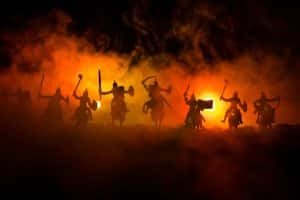 (zef art/Shutterstock)
(zef art/Shutterstock)Most of my books tend to focus on a group of people rather than on one or two individuals. This is a deliberate effort to point out the importance of teamwork and to emphasize the value of all people, Regardless of background, anyone can contribute to making the world a better place.
That’s also one reason why the later Spell Weaver books are told from different viewpoints. The first three were all from the point of view of Tal, but the fourth had several different POV characters, the fifth had Lucas, the six was mixed again, the seventh had Amy, the eighth was mixed, and the ninth will be mixed again. That doesn’t mean that every single character’s point of view is represented, but the focus is never all on one central hero. Everyone gets his or her moment, one way or another.
Steve Marino in The Inner Worlds Trap does reflect my life in that he’s an English teacher, though his interest in athletics doesn’t come from me. People, even those who know me, often miss the fact that I’m a minor character in Evil Within Yourselves. Well, if we’re being technical, the character is actually a shapeshifter pretending to be me. But that incident does take place on the campus of Beverly Hills High School, where I taught, and it does establish Shar, who had moved from Beverly Hills after his freshman year in high school, as one of my former students.
SettingsAs you know from one of my previous posts, a lot of my real-world settings have been fleshed out using tools like Google Earth. But I do have personal experience with some of the main ones.
Santa Barbara County, where Santa Brigida, the fictional town that is home to many of the Spell Weaver characters, is located, was a place my family used to vacation frequently when I was young. Consequently, my impressions of the area play a role in fleshing out that particular setting.
 Chippewa River in Eau Claire, Wisconsin (Matthew Reddy/Shutterstock)
Chippewa River in Eau Claire, Wisconsin (Matthew Reddy/Shutterstock)As for Eau Claire Wisconsin, where Max’s home is in the Different Dragon books, I spent a week there when it was the location of the national speech championships. It was a little woodsier then that it is now, but at least a few details in the books stem from my own experiences in the place.
Merced, just west of the fictional town of Madisonville where Chris lives in Haunted by the Devil, is a place where I spent very little time. Mostly, it was a place I passed through on the way to Yosemite or Sequoia. But a few details (such as the heat) did stick. It also had a lot of nearby open land on which to place a fictional town, which probably influenced my choice more than my memories of Merced.
Mythological Works (Zwiebackesser/Shutterstock)
(Zwiebackesser/Shutterstock)You would expect those to have even fewer autobiographical elements than my urban fantasy works, and you would not be mistaken.
That said, A Dream Come True: An Entertaining Way for Students To Learn Greek Mythology, which was intended to be a textbook and presents the Greek myths in an urban fantasy frame story involving students falling asleep during a review sessions and awakening in the world of Greek mythology, was certainly influenced by my teaching career.
Since I was writing for a very specific situation–students using the text for summer reading rather than in-class study, I incorporated into it discussions among the student characters. These were based on actual discussions I’ve had with students in class. The aim was to provide to the readers the information that students would normally have gotten in class discussion.
I have been asked whether the student characters were based on actual students. The answer is no, though each character does contain some personality traits I observed during my teaching career.
As for Fateful Pathways: A Story of Theseus and Harmony and Disharmony: A Story of Orpheus and Jason, there wasn’t much room for autobiography in either. In different ways, both books do reflect my values–but that, I think, should be the subject of another post.
(featured imaged copyrighted by sunnypicsoz-Geoff Childs and licensed from Shutterstock)
October 22, 2022
When Fantasy Intrudes in Non-Fantasy Shows
In case anyone new to the blog is reading this, I love the fantasy genre in all of its forms. What I’m not crazy about is attempts to graft fantasy onto shows that don’t originally have a fantasy premise. I can swallow a Halloween episode with some eerie hint at the end that suggests that maybe the ghost might not have been a hoax. I can even swallow A Christmas episode that hints at miracles. Where I draw the line is when a show plunges into the supernatural with no prior preparation or even seasonal excuse.
The most recent example that comes to mind is the sixth season of Riverdale. I think it’s generally been a great show, but its sudden shift to fantasy/horror was jarring.
Riverdale as an Example of the ProblemFrom the beginning, Riverdale has been an imaginative show. I used to watch the Archie cartoons as a little kid, and I certainly don’t remember anything about serial killers, brainwashing cults, gangs, prominent families making their money from secret drug traffic, or pretty much any of the other plot elements from the current TV show. It’s reimagining with a vengeance, and for quite a while, it worked.
To be fair, Riverdale did have some hints of the supernatural in its DNA. I’m told that in the original comics, Sabrina (the teenage witch) also lived in Riverdale, and early in the run of her latest iteration, Chilling Adventures of Sabrina, there was much talk of a crossover. Riverdale was referred to in CAS (as the murder capital of the world), though Sabrina’s home was changed to Greendale, I assumed because one town was too small to contain all the mayhem from both shows.
In the interest of fairness, I’ll mention that Riverdale also bent reality considerably in some earlier seasons, for example with the Edgar Evernever’s cult. However, in that instance, apparently supernatural developments had a scientific explanation. One might question how credible some of those developments were, but they didn’t plunge into fantasy.
(While I was writing, I stumbled on this article, which indicates that the Archie comics have recently introduced more atypical elements, so the mutation began there and then migrated to the series.)
At the risk of digressing, I’ll also mention the unrealistic progression of Hiram Lodge’s plotline. It’s all right at first, though its difficult to swallow the idea that Hiram, after being convicted of serious crimes, is imprisoned in a private prison that he owns. Seriously? His subsequent career as mayor is even worse. There isn’t a place anywhere in the United States where a town can be unincorporated so easily, and if one were, it would fall under county jurisdiction, not somehow be under the thumb of its wealthy ex-mayor, who closes down both the police department and the fire department to drive everyone out of town. (In case you haven’t noticed from earlier posts, I believe shows should at least make some attempt at realism when they deal with real-world situations.)
It’s also fair to point out that the sharp turn in season six is foreshadowed at the end of season five, when Cheryl Blossom discovers that she is the descendant of a witch who was burned during the Riverdale witch trials and seems to manifest supernatural powers. But such a radical change in premise really required more of a lead-up. I might go as far as to say that some supernatural elements should been present throughout, even if they were more hinted at than actually shown.
To complicate matters further, the season begins in Rivervale, a parallel universe town apparently created by the explosion of Hiram’s bomb because reasons. (If there was an actual explanation of why the bomb created a separate universe, I totally missed it.)
That gives the writers the opportunity to kill Archie without actually having to kill him (since there are now two), and it creates room for some otherwise completely implausible character developments. (Cheryl is now apparently powerful enough to mind-control almost the entire town, which is how she can make Archie into a human sacrifice. But that’s okay because she’s not actually Cheryl, anyway. She’s Rivervale’s version of Cheryl.)
I can buy parallel universes if they differ in some logical ways (that is, outgrowths of different pasts rather than plot convenience). That said, the writers do make clever use of Rivervale near the end of the season, so that’s something.
Meanwhile, back in Riverdale, Archie, Betty, and Jughead all develop superpowers because reasons. (That explosion of Hiram’s was certainly something, wasn’t it?) From there, we get everything from time travel to possession by the dead to a super villain strong enough to bring a comet down on Riverdale. Oh, I almost forgot to mention the Holy Grail and angels. We also got the long-awaited crossover when Sabrina Spellman appears. At least in that case, the writers explained how Sabrina could be there when she’d died at the end of her own series.
The article I referenced above make a case for the fact that the show was always crazy, at least from season two on, so that the plunge into the supernatural should be acceptable to us. I’ll admit that the show always had its wild side. But there’s a difference between the improbable and the fantastic. Put another way, Hiram Lodge being incarcerated in his own prison is a stretch, and probably a more credible way should have been found to keep Hiram making mischief. But it’s far different than giving Hiram Lodge a pet unicorn. (Wow, now that I think of it, season six didn’t have unicorns. I wonder why not.)
Don’t get me wrong. Riverdale has done a lot of great things. The characters are memorable, and there are many scenes that will stick with a viewer for a long time. For me, one of those was Archie pounding his fists bloody on the ice to rescue Cheryl, who is drowning beneath it. The show was always emotionally engaging, so much so that I never thought of bailing out on season 6, jarring as it was. And I’ll watch season seven (in which the characters have all been catapulted back to 1955).
But it could have been better if it had stuck to its own genre or at least, if it had prepared better for the shift. As it is, it felt forced rather than natural. Apparently, I wasn’t the only one, since viewership has been dropping.
Pretty Little Liars Did It Too!My memories of that show are a little bit more distant, but I thought I should mention it. It was another show I thought really worked–with the exception of giving a happily-ever-after ending to a love story based on a high school teacher and one of his students. That I think sends a profoundly wrong message. Oops, I’m digressing again. As I was saying, the show had well-developed characters, engaging plots, and a lot of heart.
Then came a supernatural digression that, though less radical than the one in Riverdale, still felt awkward. It may or may not have been motivated by a desire to launch the undeniably supernatural spinoff, Ravenswood, which only lasted a season. But as with the genre shift in Riverdale, it really wasn’t adequately foreshadowed.
Ironically, the Pretty Little Liars: Original Sin spinoff, which I just recently heard about, apparently mentions Riverdale, thus indicating that it is set in the same universe.
Other InstancesNot exactly the same thing, but equally jarring, was the crossover episode between Eureka and Warehouse 13. The problem? Eureka was a science fiction show, and Warehouse 13 was urban fantasy. The supernatural element was incompatible with the scientific premise in Eureka. Why someone wanted to do something like that is beyond me.
Apparently, there are also other examples, some in shows I’ve watched, though I don’t recall them. This article provides seven such examples if you’re interested.
Advice to WritersThere’s nothing wrong with mixing genres–as long as you plan it out from the beginning. That means giving a viewer or a reader hints of the fusion, rather than just springing it on them. Organic development is always better than squeezing something in where it really doesn’t fit.
(The featured image is copyrighted by Kathy Hutchins and licensed from www.shutterstock.com.)
October 8, 2022
Inspiration, Part 2: Research
Most people hear research and associate it with nonfiction, where it is undeniably crucial. What we don’t always realize is that research can be important in fiction as well–and not just in a genre like historical fiction. Depending on the circumstances, even fantasy can benefit from the judicious use of research.
A Counterexample: What Happens When Writers Don’t Do Their HomeworkWhether we’re talking about books, TV, or movies, the connection between the audience and the story can be strained, perhaps even broken, by details that don’t make sense in the real world.
 (copyrighted by Kathy Hutchins and licensed for editorial use from www.shutterstock.com)
(copyrighted by Kathy Hutchins and licensed for editorial use from www.shutterstock.com)Examples of this kind of problem are numerous, but the one that comes to mind right now is from the MTV series, Teen Wolf. As you might guess from its name, it was predominately YA horror. But since it was supernatural horror, it had a considerable overlap with fantasy.
In most respects, I thought the show was very well done. But the writers seemed to have little sense of how high schools work–a real problem in a show with a high school setting.
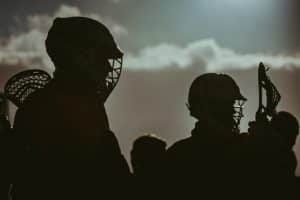 (copyrighted by catwalkphoto and licensed from www.shutterstock.com
(copyrighted by catwalkphoto and licensed from www.shutterstock.comA good example of this is the way sports are handled. Most of you will probably remember that high school sports have defined seasons. But apparently they don’t at Beacon Hills High School, where three of the initial main characters and several other significant ones are Lacrosse players. In every season except the last, the Lacrosse season ran all year.
Some of you probably find that criticism a little nitpicky, but for someone like me who had taught high school for many years, it was continually jarring. One would think it would have been for actual high school students as well.
[image error]Of course, audience members will react differently to different stimuli. One of my friends, who was a life guard, used to howl over the numerous inaccuracies in Bay Watch. And I used to snarl at the original Beverly Hills 90210 for its weirdly lily-white depiction of a fictional West Beverly High when the real Beverly Hills High School has students representing more than fifty different home languages and is more than 30% Persian. Don’t even get me started on that one! At least the show didn’t maintain the fiction of valet parking for students past the first episode. Other audience members with no experience with lifeguarding or Beverly Hills might not have noticed the issues in either show.
Actually, as I think about it, Teen Wolf was generally more realistic than Bay Watch or Beverly Hills 90210–though that is setting the bar pretty low. Here are a few other examples, that, while they didn’t make me howl or snarl, did get me to bare my fangs a time or two.
 (copyrighted by GSoul and licensed from www.shutterstock.com)
(copyrighted by GSoul and licensed from www.shutterstock.com)Late in the series, the Argents (the family of werewolf hunters whose members are either misguided or downright evil, an interesting twist) get the high school principal to resign, apparently by torturing him–but the principal doesn’t subsequently file charges or anything. OK, I can almost buy the idea that he was intimidated enough not to. But who is the new principal? Gerard Argent, the leader of the werewolf hunters, who apparently at some point had time to get an administrative credential, even though he’s been werewolf hunting his entire adult life. Evidently, he not only took time out from hunting werewolves to get an administrative credential, but he made sure it was valid for a location he’d never been before. He must also have have had a resume impressive enough to get himself hired as a principal the next day. In real life, of course, there would have been a hiring process lasting at least a few days, during which there would be an acting principal, usually one of the assistant principals. In fact, public schools generally have to do business that way in order to not to break laws regarding hiring practices (vacancies must be advertised, people must be given a chance to apply, etc.)
But clearly, Beacon Hills doesn’t have any such legal requirements, since Victoria Argent, Gerard’s daughter-in-law is also hired the next day as the school secretary. (Apparently, her predecessor was just fired with no notice, another legal violation.)
I can understand why the plot would have required a fairly rapid move in these cases, but the hideously unrealistic progression could have been mitigated by having the Argents do more long-term planning, with clues in earlier episodes and a more gradual process for moving the principal out of the way and getting Gerard in.
 (copyrighted by studiovin and licensed from www.shutterstock.com)
(copyrighted by studiovin and licensed from www.shutterstock.com)Schools aren’t the only place where reality gets bent to the breaking point. Take the local hospital, for example. In the beginning, it has something like a normal staff. As the show progresses, Melissa McCall, the mother of Scott (the newly made alpha werewolf who is the main character) increasingly looks as if she’s the only staff member. I guess money to hire extras must have been in very short supply. This becomes apparent in all the episodes (and there are a lot of them) in which she sneaks wounded supernaturals down to the basement to operate on them, generally using the hospital’s main elevator and entering from the main lobby.
The idea that it wouldn’t do for the regular doctors to get their hands on the supernatural patients makes perfect sense. But the way in which that was handled would have made more sense if Melissa had been a doctor (and thus had the expertise to perform the surgeries she does), maybe a doctor at a small clinic where she’s in control. Or if it were desirable to keep the action focused on the hospital, which does make sense in some episodes, Melissa at least needs a better way to sneak in supernaturals.
 (copyrighted by boscorelli and licensed from www.shutterstock.com)
(copyrighted by boscorelli and licensed from www.shutterstock.com)Then there’s the town’s mental institution, which seems pretty normal at first but eventually turns into a place for illegal experiments and torture, while at the same time holding at least one dangerous supernatural prisoner. In other words, it seems to be whatever the writers need it to be for a particular episode. If there was a credible explanation for these transformations, I missed it.
And lets not forget the gay clubs. I like the inclusive way the show handles sexual preference, but I’m left scratching my head over a small town that has two gay clubs, either one of which appears to have standing room for the town’s entire population. This is despite the fact that only a few of the characters are gay. It’s hard to see how these clubs survive from a strictly financial perspective. I guess we’re supposed to believe that they are heavily attended by straight people and/or out-of-towners. Maybe that could be an explanation, but it’s a stretch.
I’d better stop now so as not to be accused of beating a dead werewolf. Don’t get me wrong. This show is well worth watching. I thought it was imaginative, emotionally moving, and positive without being preachy. But it could have been even better if the non-supernatural elements were handled more realistically.
That’s why writers, even fantasy writers, need to do research–the more realistic the real-life elements are, the less chance there is that the audience will be jolted out of their immersion in the story.
Uses of ResearchIncreasing Verisimilitude (copyrighted by Gustavo Frazao and licensed from www.shutterstock.com)
(copyrighted by Gustavo Frazao and licensed from www.shutterstock.com)As I tried to demonstrate in my rant above, verisimilitude, the appearance of being true or real, is important in keeping the reader immersed in the story. If a writer knows about something from personal experience, there’s no need for research. But if a writer doesn’t know how something works in the real world, research is highly desirable.
My first book, and to a lesser extent, the following five, had a high school setting, which was easy for me to handle, since I’d already been teaching high school for years. But there were aspects with which I was less familiar. Sports was the most obvious example. Most of the main characters were athletes, but I’m the most unathletic person on the planet. So I needed to research enough details to keep from making any dramatic mistakes.
For example, for Living with Your Past Selves, I needed to research junior boxing rules as well as CIF wrestling rules. For Divided Against Yourselves, I needed soccer terminology for the scene in which Tal is having a bad day and isn’t playing well. It took more time to do the research than it did to write the scene, but it was worth the effort.
 (copyrighted by Shahril KHMD and licensed from www.shutterstock)
(copyrighted by Shahril KHMD and licensed from www.shutterstock)Needless to say, the details of Lucas’s capoeira in We Walk in Darkness and later are also the results of research. I also watched some videos to get a feel for how the moves looked.
Working in a high school also handed me some material without needing to do research. For example, the conversation Carlos has in Divided, in which he talks about why he’s a fast swimmer but a slower runner is based on a conversation I had with a student. The same is actually true of a lot of conversations about everyday things. But when I needed something I didn’t know about, I did my homework.
Other areas I needed to research involved medieval weapons and armor. It was a good thing I looked a few things up, because I discovered I had some misconceptions.
 (copyrighted by cosma and licensed from www.shutterstock.com
(copyrighted by cosma and licensed from www.shutterstock.comMany of you may have seen those replica swords that usually weigh somewhere between thirty and fifty pounds. Well, they aren’t really replicas, in part because no one would have been able to wield anything that heavy in a real battle. The typical sword was much lighter weight. Similarly, full suits of plate mail were seldom worn in actual battle. The suits of armor we see so often were used in Thirteenth Century jousting, not in battle. (That doesn’t mean that you can’t create lighter armor in a fantasy, but it helps to know you need to mention that it is lighter so readers familiar with medieval armor won’t think you made a mistake. Faerie plate mail in my stories is much later than that made by human smiths.)
For the two novels based on Greek mythology (Fateful Pathways: A Story of Theseus and Harmony and Disharmony: A Story of Orpheus and Jason), I needed to do a lot of research, not only to refresh my memory of the stories but to check details of dress, armor, weaponry and architecture. Even so, I’m sure I missed a detail here and there, but at least I avoided the most obvious errors. For instance, we tend to think about building in stone, I imagine because we have more exposure to medieval castles than we do to ancient Greek structures. But, except for mythical constructions like the walls of Mycenae supposedly built by cyclopes, Greek structures were likely to be clay bricks with a limestone wash over them (and in important structures, maybe a limestone façade, or perhaps even a marble façade somewhat later). The castles we visualize came much later.
I think readers might be inclined to be more forgiving about details of daily life in ancient Greece than they would be about modern details, but if one can find accurate information, it’s better to use it than to ignore it.
Taking Advantage of Ready-Made Details (copyrighted by shuttersv and licensed from www.shutterstock.com)
(copyrighted by shuttersv and licensed from www.shutterstock.com)For urban fantasy or any genre in which some of the settings are real-world places, the internet makes it easy to see images and find details for those real-world settings. Of course, creating a landscape from scratch is probably faster if one has a good imagination. But there is something about incorporating pieces of the real world that I find satisfying. It helps me ensure that I don’t fall into a rut in which a lot of different places sound the same, and it theoretically helps with verisimilitude if someone is familiar with the area. (No reader has ever mentioned that particular feature to me, but then again, I have no way of knowing where my readers are located. Nor do I have any way of gauging the reactions of readers who don’t review or comment to me.)
Three of my major locations are completely fictional. Santa Brigida from the Spell Weaver books is a fictional town near Santa Barbara, California. Le Dragon from the Different Dragon books is a fictional town near Eau Claire, Wisconsin. Madisonville from the Soul Salvager books is a fictional town near Merced, California. Other locations, such as those in other planes of existence, are generally derived from myths or folktales. The first group is constructed from my imagination, the second from earlier sources–we’ll get to that kind of research later.
But for the real locations, I do a little research. My characters stay in real hotels, eat in real restaurants, attend real schools, visit real landmarks, go to real churches, synagogues, mosques or whatever is appropriate.
 (copyrighted by Mark Van Scyoc and licensed for editorial use from www.shutterstock.com) www.shutterstock.com)
(copyrighted by Mark Van Scyoc and licensed for editorial use from www.shutterstock.com) www.shutterstock.com)This is a good spot for a quick note about trademark. Trademark law explicitly allows the use of trademarked names in fictional contexts, but there are a couple of ways you can get yourself in serious trouble if you aren’t careful.
First, trademarked names must be used in a favorable or neutral context. In other words, if you want a casual reference to a character eating in McDonald’s, that’s fine. If you want a character to comment on how great a McDonald’s hamburger is, that’s fine. But if you want a fast food company to be an instrument of Satan, then you must use a fictional one. Doing otherwise could be regarded as trademark tarnishment, and you could end up on the wrong end of an expensive lawsuit.
Second, a company or product with a trademarked name shouldn’t be the focus of your plot. In other words, incidental use is fine. Making a trademarked company the major focus of your story is not fine. Doing something like that could create the false impression that the trademark holder has endorsed your book or give the trademark owner the feeling that you are trying to profit from the trademark. Either of those situations could also result in litigation.
 (copyrighted by Andrea Raffin and licensed for editorial use from www.shutterstock
(copyrighted by Andrea Raffin and licensed for editorial use from www.shutterstockAt the risk of digressing too far, using real people’s names can also be an issue. Incidental use of public figures is fine, but use the same principles you would in a trademark situation–the references must be favorable or neutral, and the public figure can’t be a significant character or plot point in the story. Doing otherwise might make you vulnerable to defamation or invasion of privacy claims, perhaps also other legal issues I’m not aware of.
As far as real people who aren’t public figures are concerned, don’t use their names at all or otherwise spotlight them, for example, by using an actual address in the story. That’s just common sense–I hope. A lot of authors feel the same way about small business names, and only use them by obtaining permission first. I’m not sure of the legal implications, but at the very least, it seems polite to do that.
Assuming you are careful to follow those rules, you should be safe in using real places as settings.
 (copyrighted by George Sheldon and licensed for editorial use from www.shutterstock.com)
(copyrighted by George Sheldon and licensed for editorial use from www.shutterstock.com)If I’m using a real place, I tend to use real details when they are available. For instance, when Chris is trying to talk Steve out of selling his soul in Haunted by the Devil, they’re eating at Applebees in Merced. I mentioned it was on Olive and that it was near UC Merced. I also checked the online menu, and had both of them eating actual menu items, something I often do with restaurants.
Similarly, when Max and DL are eating in the cafeteria of an actual high school, they’re eating something the cafeteria actually serves. And Max’s class schedule is composed of classes actually offered at that school. In addition, descriptions of the the front of the school and the hallway are based on photographs available online.
 Of course, if I’ve been to a real place, I may still use online photos to verify my memory, but I’ll also draw on my recollections. This if true, for example, of the Beverly Hills High School scene in Evil within Yourselves. (Fun fact: that scene also features a Hitchcock-like appearance by me–to be precise, a shapeshifter pretending to be me. So far no one, not even people who know me, has ever noticed that. Nor have they registered on the fact that Shar Sassani, one of the main characters in the Spell Weaver series, is a fictional former student of mine.)
Of course, if I’ve been to a real place, I may still use online photos to verify my memory, but I’ll also draw on my recollections. This if true, for example, of the Beverly Hills High School scene in Evil within Yourselves. (Fun fact: that scene also features a Hitchcock-like appearance by me–to be precise, a shapeshifter pretending to be me. So far no one, not even people who know me, has ever noticed that. Nor have they registered on the fact that Shar Sassani, one of the main characters in the Spell Weaver series, is a fictional former student of mine.)
Do such realistic touches and intersections with reality actually make a difference to readers? As I’ve said, I don’t really know. I think I was inspired by the example of Peter Jackson’s use of realistic props in the LOTR trilogy. Aside from items that would have been too heavy, like armor, Jackson used craftsmen to create real artifacts rather than props that only looked real. For example, he had a glassblower to create objects like goblets, even if they were only going to be onscreen for a few seconds. Did that make a different in the quality of the movies? It’s hard to say. Perhaps it did do something on a subliminal level. I think that realistic touches in writing could act on a subliminal level even if a reader isn’t that consciously aware of them.
 (copyrighted by dennizn and licensed from www.shutterstock.com)
(copyrighted by dennizn and licensed from www.shutterstock.com)By the way, one excellent tool for geographic and sometimes street-level detail is Google Earth. It helped me pick out undeveloped or farm areas in which to plant Le Dragon and Madisonville. That avoids the need to distort the real geography as I did when I stretched out the California coastline to make room for Santa Brigida. It also gave me an easy way to see how such imaginary communities would mesh with freeways, highways, and other real towns and cities nearby.
To further flesh out real locations, street-level view is great where it’s available. It’s easy to get the general look of an area, the kind of homes or businesses that might be there, whether or not there are trees on the street, and a number of other kinds of details that might be useful for descriptive purposes. This is particularly true if you are using a number of areas and can’t travel to all of them.
I’ve used this method in almost every book since the first for areas where street-level view was available. For interiors, I had to rely on available photos, mostly online but sometimes also from print sources. This is how I found a good location for Max’s apartment in Haunted by the Devil, as well the layout of UC Merced. On a less mundane level, this is how I fleshed out the Venetian scenes in The Inner Worlds Trap and the scenery surrounding the burial mounds near Uppsala in Soul Switch. There are dozens of other times when I used similar methods to flesh out real world areas in an accurate way.
Obviously, it’s possible to adjust real-world locations to fit the needs of the story. For example, I inserted a mysterious bookstore that isn’t actually there on a street in Merced. (It’s really an entry way to a location that travel magically, so it wouldn’t disturb any purists who know the area. Keep the exact location a little more vague if you want to make real physical additions to an area. I don’t know about you, but I always find it unsettling when someone has two real streets intersect when they actually run parallel (a common problem in police procedurals for some reason) or who insert odd geographical features in real places. (N0t to pick too much on both iterations of Beverly Hills 90210, but both have a Beverly Hills beach club. The problem? Beverly Hills has no beach. It isn’t anywhere near one. This is especially strange considering that both shows were filmed in the area, though generally not in Beverly Hills itself.)
Researching for InspirationYes, research can be a source of inspiration by unearthing new ideas for parts of stories or even entire stories.
As you might imagine, myths and folktales provide rich material for fantasy writers, whether urban or epic.
 (copyrighted by ironika and licensed from www.shutterstock.com)
(copyrighted by ironika and licensed from www.shutterstock.com)Epic fantasy doesn’t necessarily rely on existing myths, but it often draws inspiration from them. For instance, Tolkien’s Middle Earth owes a lot to Norse mythology. To use a more modern example, Sarah J. Maas’s Court of Thorns and Roses series takes as its starting point the story of Beauty and the Beast. As it progresses, it borrows from a number of traditions. For instance, the Cauldron that plays such a large role is similar to some of the cauldrons in Celtic mythology.
Urban fantasy can also draw inspiration from myth and folklore. Personally, I like to use such sources as inspiration. Arthurian tradition (an uneasy mix of Celtic mythology and early Christianity) provided me with Taliesin Weaver, my original protagonist who is a reincarnation of Taliesin, King Arthur’s bard. The same tradition gave me Ceridwen, an important figure in The Tale of Taliesin who becomes a major antagonist in Living with Your Past Selves. Similarly, Carla Rinaldi’s prior life persona, Alcina, comes from the Renaissance Italian reinterpretation of the Arthurian tradition (specifically that in Ariosto’s Orlando Furioso). Khalid’s prior life persona, Ruggiero, comes from the same source. (And yes, the ancient Celts believed in reincarnation.)
As my writing progressed, I liked to blend different traditions. I started with Arthurian and faerie lore, expanding as I’ve said into Renaissance Italian twists on the Matter of Britain and the Matter of France. Hidden among Yourselves brought in Greek material. Evil within Yourselves brought in a variety of Christian elements, including the Holy Grail. The base kept expanding, producing an eclectic combination.
Just as the individual traditions furnish inspiration, so do the combinations, helping to create different contexts in which to use the old characters. It is by such a process that the Arthurian tradition developed in the first place.
 (copyrighted by Alexey Pevnev and licensed from www.shutterstock.com)
(copyrighted by Alexey Pevnev and licensed from www.shutterstock.com)Some people worry that drawing on old traditions limits originality, but that need not be the case. Even retellings of the original myths differ widely from each other. For instance, the classic Mary Renault take on Theseus is far different from mine in Fateful Pathways: A Story of Theseus. Renault is trying to fit the myths into a modern wordview by rationalizing the myths. On the other hand, I’m keeping the supernatural elements but finding ways to make the characters more relatable to modern audiences.
Of course, urban fantasy takes on mythological figures are even more radically different. For example, Queen Mab is a character in my books and in the Jim Butcher Harry Dresden books, but both her role and her personality are as different as night and day. My Mab is a minor but generally positive character, a faerie queen of Connacht whose magic relates to dreams (as in the reference to Queen Mab in Romeo and Juliet) and who is occasionally an ally of Taliesin and his friends. On the other hand, Butcher’s Mab is a much more epic character, the queen of air and darkness, leader of the Winter Court. Her methods are much more brutal than my Mab’s, but she is also more nuanced, a seemingly evil figure who just might be working for the ultimate triumph of good–or not.
Stories that have endured for centuries have endured for a reason. There is something about them that resonates on some deep level of people’s minds. That is why they keep reappearing in literature, both in their own form or in a different guise to fit a different culture. Using them need not kill creativity. Such use just enables imaginative products to benefit from certainly psychologically appealing themes.
(The two photographs of Beverly Hills High School are mine. The featured image is copyrighted by vladgphoto and licensed from www.shutterstock.com.)
September 23, 2022
Bending Reality: Cobra Kai Season Five
(Caution: this review contains some spoilers. If you haven’t yet watched the series but intend to watch, it might be better not to read this review until you’ve done so.)
BackgroundThe Karate Kid franchise has captured our imagination for many years, and rightly so. After all, who doesn’t love a good underdog story, especially one with such obvious overtones of the endless battle between good and evil (or in this cased, the bullied and the bullies)?
The original film (1984) was successful enough to spawn two sequels (1986 and 1989), but that turned out to be just the tip of the dojo. A 1989 cartoon series dipped into fantasy by introducing the hunt for a magic artifact. Then a third sequel to the original film, The Next Karate Kid (1994) still had Mr. Miyagi as the sensei but featured a new female student in the title role.
Even that was not the end of the line. The original had a remake in 2010. It might be more appropriate to call it reimagining, since it’s set mostly in China and, despite the title, features kung fu rather than karate. I guess Kung Fu Kid didn’t have the same ring to it. In 2012, there was talk of a Karate Kid–Rocky crossover (involving Rocky’s son and Daniel’s daughter) and a few other projects that didn’t quite take off. There were also video games, actions figures, and other merchandise. Currently, there is a Broadway musical in the works, as well as a new feature film that styles itself as “the return of the original Karate Kid franchise.”
That last part is a little difficult to believe, in part because the TV series, Cobra Kai, is so clearly the return of the original Karate Kid franchise–and there will be no connection between it and the upcoming film. Go figure!
The Perils of “Halloweenification”One of the potential pitfalls of an iconic concept having such a long life is that different creative visions become entangled with each other, creating what could be called the “Halloweenification” of the franchise–long discussions of what’s canon and what isn’t, ending in several parallel-universe style timelines, even if they aren’t labeled that way. Actually, maybe it should be Starwarsification. Either way, don’t get me started on that. It’s a phenomenon that deserves a post of its own.
Cobra Kai as the Fulfillment of the FranchiseCobra Kai is rooted in the “Miyagi-verse.” In other words, it only acknowledges the first four films as canon. Let’s face it–it would have been hard to do anything else. Much as I like fantasy, it’s hard to imagine how the show could have embraced the animated series and remained coherent. Nor could it
logically have absorbed the reimagined version.
Cobra Kai has a lot going for it. The underdog theme is still there, as well as the underlying battle between good and evil–but now, the portrayal of both is even more nuanced than in the original films. We can see this most obviously in the growth of Johnny, who was never a carboard cutout villain but now has a more developed backstory and gradually evolves into a hero. John Kreese doesn’t ever become a hero, but his behavior is also made more understandable by fleshing out the backstory.
The heroes are equally nuanced. Daniel is in his own way as fixated on the past as Johnny and has his own problems with self-awareness. The fact that his own son is becoming a bully–which Daniel doesn’t notice at first–is a poignant touch. When Ali, former girlfriend of both Johnny and Daniel, points out that they are more similar than they realize, her words ring true.
The new characters (AKA Karate Kid: The Next Generation) are also realistic. Basically good people, Robby and Miguel nonetheless end up in an on and off conflict–sometimes serious conflict. They and other characters, such as Hawk and Kenny, also illustrate how hard it is to walk the fine line between self-defense and aggression. This is particularly true in the complicated battle in which Robby and Miguel inadvertently end up in a totally unnecessary fight that leaves Miguel unable to walk. Hawk and Kenny both move from bullying victim to bully, though Hawk moves back in one of the more moving redemption sequences I’ve seen recently.
Nor are the women left out of the dynamic. Sam and Tory are locked in on and off conflict that nicely parallels that of Robby and Miguel without seeming like a mere imitation of it. They have struggles of their own, as do Amanda (Daniel’s wife) and Carmen (Johnny’s girlfriend).
Despite the many shifting alliances and perspectives, some of which might have felt contrived if executed by lesser artists, the show manages to keep true to its own ideals and to realism at the same time–not always an easy feat.
On a more technical level, Cobra Kai feels like meeting an old friend again after many years. It’s not just that it captures the spirit of the original movies, though it certainly does that, even as it manages to modernize the application of that spirit.
What pushes Cobra Kai even beyond that is that so many of the cast members from the original films are reprising their old roles. It’s not always easy to do that for reunion specials, let alone five TV seasons. Unfortunately, Pat Morita passed away (as did his character, which was the right choice). But every other major figure and some minor ones are played by the same actors. Even Yuna, the young girl Daniel rescues from the typhoon in KK II, returns, played by the same actress, as the executive vice president of an auto company who helps Daniel save his car dealership. (Sometimes, good deeds really do pay off.)
It’s true that sometimes it was necessary in some of the expanded backstory scenes to have other actors play the younger selves of the characters. But whenever possible, flashbacks are scenes from the original movies or occasionally camera angles from the cutting room floor. These scenes contribute to the feeling of reality and help cement the continuity between the films and the series.
On the whole, this series was one of the best dramatic series I’ve seen in a long time.
And then came season five.
The Problem with Season FiveTo be clear, season five isn’t bad. It just doesn’t quite live up to the high level set by the first four, though it is still worth watching.
The problem is that the carefully maintained realism in the first four seasons cracks in several spots in season five. For instance, Johnny, trying to prepare to support his future baby, takes a job as a rideshare driver. We all know that Johnny has some rough edges, but in that job, which is theoretically important to him, he acts like a complete idiot. The scenes in which he screws up are actually painful to watch. He’s never been more of a loser, despite the considerable progress he was supposed to have made in the first four seasons and continues to demonstrate in other parts of the season.
Writers, it’s called subtlety. It should have been possible to show he was struggling a little to adapt without creating scenes that strain credibility far beyond the breaking point.
Even worse, however, is the way the season ends. (Remember what I said about spoilers? If you ignored me at first, now’s the time to stop if you haven’t watched yet.)
Honestly, the ending feels like the writers hadn’t realized until too late that they had only one more episode to go. The result is that a complicated and difficult situation gets wrapped up in a completely implausible way.
I don’t care how drunk some of the protagonists are at the time. There’s a difference between drunk and irrational–or insane. Mike Barnes–who, now that I think about it, may not even have been drunk–decides for no apparent reason that Daniel is responsible for the fire that destroyed his furniture store and basically kidnaps the drunken Daniel, Johnny, and Chozen. (To make that plausible, the foundation would have to have been laid for Mike to be that irrational–or at least so lacking in business sense that he forgot to buy fire insurance.)
This same guy, apparently hellbent on getting revenge on Daniel and two other guys even Mike doesn’t think had anything to do with the fire, immediately changes course when Daniel tells him Terry Silver is responsible. Why he takes Daniel’s word for this without even checking is at best unclear. In a split second, he drops his revenge/beat-down (or murder?) plan that would have gotten him twenty years or more in prison and decides its better to attack billionaire Terry Silver at home–because how could anything go wrong with that plan?
Daniel at least has the sense to say no. But I have trouble buying Johnny going along with that plan. And the idea that Chozen, ever the careful strategist, would go along with such a mess–not to mention abandoning Daniel on the roadside to implement the plan immediately, is completely ridiculous. There just isn’t enough alcohol in the world to make that plausible. They’d all be comatose from alcohol poisoning long before that plan seemed like a good one.
Nor is that the end of the attack on logic. Do the three musketeers attempt any kind of stealth in approaching Silver? Not for a moment. They smash through the front gates with their rental vehicle on the assumption that a billionaire’s home has no kind of security system. Then they charge into the house intent on–what exactly? Which one of their problems would beating Silver to a pulp have solved? Unless they killed him, Cobra Kai would still have gone to the international competition at which their actions would no doubt prevent Johnny and Daniel’s hybrid dojo from competing. Of course, beating Silver or killing him would go against all the values the franchise has advocated from the beginning. But hey, it’s going to make for some nice actions sequences, so let’s make sure the good guys are all in.
The one credible thing in the whole sequence, given the way Terry Silver had been portrayed up to that point, was that, instead of calling the police, he has his army of corrupt sensei, who were conveniently all living with him, beat the good guys to a pulp. The only one in the scene who apparently thought about the law at all, Silver pointed out to them that he could legally respond to trespassers with force. His excesses are fully consistent with his earlier actions and philosophy.
Keep in mind that earlier in the season, Johnny and Chozen together could at best equal one of Silver’s super sensei. But as the farce at Silver’s house progresses, Johnny, who keep in mind is too drunk to know what he’s doing, defeats four of them. I’m not bothered by someone exceeding his or her normal limits as a result of remembering something inspiring (like Johnny’s expected baby). But to become eight times as powerful, even though physically impaired? That’s a little too much even for me. With a little foreshadowing, having Zhen Wu, the god of martial arts, appear and fight at Johnny’s side, accompanied by the ghost of Mr. Miyagi and maybe a special appearance by Jackie Chan, would have seemed more natural. (Cobra Kai wouldn’t even have been the first show to lurch into the supernatural. Pretty Little Liars and Riverdale both come to mind.)
Meanwhile, what the younger characters are up to is actually more rational than what their older counterparts are doing, though by entering the main Cobra Kai dojo, they are guilty of trespassing. But at least their mission, to find and publish incriminating video that will sink Terry Silver, is rational.
However, they survive the inevitable arrival of the Cobra Kai students through yet another lapse in reality. I can buy Stingray having a change of heart, alerting Amanda and Carmen to the danger the kids are in, rescuing Daniel, and heading to the dojo. Stingray’s taking a big risk, but at least there was some foreshadowing of a possible conversion experience. What I don’t buy is that he, whose relative lack of karate skills is a running joke, would be able to defeat two Cobra Kai students Daniel doesn’t want to fight because they’re kids. Has he been practicing secretly? No, actually, he’s been hanging out at the luxury pad Terry Silver gave him, playing his weird version of Dungeons and Dragons. Apparently, that was just the right preparation to make him a karate master. Sigh!
There are heartwarming moments, like all of the basically good karate students finally fighting on the same side at the same time and the downfall of Silver (which is set up in a credible way). But by now, the storyline has diverged so far from reality that it’s impossible to have a realistic ending. Yes, Silver might be in prison for a long time–but in real life, he’d hardly be the only one arrested, or at least questioned.
The ending brushes aside the fact, that, absent a plea deal, Stingray should go down for bribery and perjury–and that his unsupported testimony may not be convincing enough to a jury to get Silver locked up. (A police officer refers to a multitude of charges, but it’s difficult to imagine what they are, aside from framing Kreese and maybe assaulting Stingray. In this season, Stingray describes the situation as if he agreed to be beat up, in which case, there are no charges for that. The premise from earlier is that there’s no evidence of arson to hang that on Silver. Acts like winding up Daniel and bribing a referee are immoral, but not illegal. Maybe they can make a case for child abuse over Tory’s hand–but technically, she does that to herself.)
Meanwhile, Johnny, Mike, and Chozen (once he gets out of the hospital) should go down for vandalism, breaking and entering, and trespassing at the very least, maybe assault depending on how Silver’s legal team can spin that. After all, they announced that they’d come to beat him up. Mike should also go down for art theft because of the Rembrandt we’re supposed to think that he can sell to rebuild his furniture store.
Don’t get me wrong. I don’t want season six to be about legal woes for all those good people. It’s the writers who made them do it–very literally. The ending really needed more than one episode, though I can imagine ways (such as Silver, rather than Mike Barnes, being the one to kidnap Daniel, Johnny, and Chozen) in which the good guys’ actions could have been justified, morally and hopefully legally as well. As it is, they look like inept vigilantes at best. And they seem to have betrayed their own philosophies. The writers show some consciousness of this awkwardness by keeping Daniel out of it, but it’s too little, too late.
All of that said, Cobra Kai is so good in general that I still love it despite the last episode being an epic train wreck. If there is a season six, I’ll just pretend the problems were resolved in some more rational way and hope the writers can keep the train on the rails this time.
PS As I think about a possible season six, I realize that John Kreese is likely to be back as a villain, even if he’s only creeping around in the shadows. His earlier conviction will be overturned, but he will probably also be charged with his jail break, which included violent assaults on officers, so he’ll need to keep a low profile. But if he does come back, he’ll be an unpleasant reminder of yet another implausible situation.
Remember how Daniel and Johnny promise Kreese legal assistance in exchange for information about Silver’s plans and then renege on the deal? Keep in mind that at the time, they were pretty sure he wasn’t guilty. But they’re content to keep him in jail for a crime he didn’t commit because reasons. I would imagine the writers did that so he’d have an excuse to want revenge on Johnny and Daniel. But the whole thing makes Johnny and Daniel look so bad that part of me hopes Kreese gets revenge. Yes, he’s made mistakes, but what they do goes against their own principles–an eerie foreshadowing of what they will do later.



